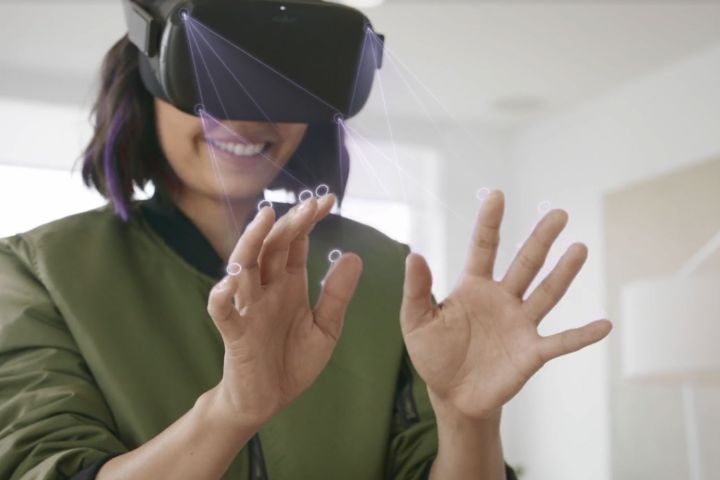
At Oculus Connect 6, Facebook announced the next big piece in virtual reality (VR) tech, finger tracking for the Oculus Quest. Facebook CEO Mark Zuckerberg took to the stage to make the announcement and say that demos would be available to attendees after the keynote.
Though he didn’t get into the exact details of how this technology works or what the limitations of it are, Zuckerberg implied that it worked on the Oculus Quest as an alternative to using the controllers that come with the device.
Facebook showed a video reel that demonstrated some of the things you could do with the finger-tracking, which includes playing games and interacting with objects in VR. It didn’t require gloves or any kind of new sensors, but was able to monitor all 10 fingers of the player in real-time in VR.
Later in the event, Facebook explained that the technology used model-based tracking and neural networks to see exactly what your fingers are doing and instantaneously recreate them in VR. This is all done using a mobile processor, without compromising the GPU or CPU performance.
‘Hand Tracking on Oculus Quest,’ as it’s called, will be available in early 2020 as an “experimental feature for consumers and an SDK for developers,” as stated by the blog post.
Zuckerberg even mentioned the company’s recent purchase of CTRL labs, which reads brains waves to control virtual environments. Though he stated this technology was in early stages (and didn’t require an implant in your brain), Zuckerberg firmly declared controlling VR with your brain as the future of inputs for the platform.
Facebook purchased Oculus in 2014, and has dramatically shifted its focus toward social VR and more user-friendly content ever since. Zuckerberg repeatedly highlighted how far VR headsets have come, moving from devices that required plugging into expensive gaming PCs to wireless headsets that would eventually not require controllers. Facebook, of course, still sells a new VR headset that does this called the Oculus Rift S.

